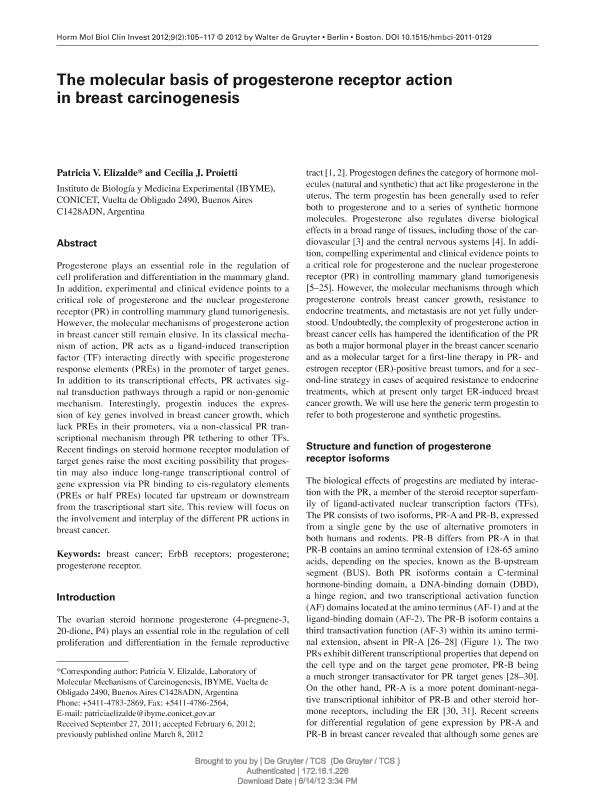Artículo
The molecular basis of progesterone receptor action in breast carcinogenesis
Fecha de publicación:
04/2012
Editorial:
De Gruyter
Revista:
Hormone Molecular Biology and Clinical Investigation
ISSN:
1868-1883
e-ISSN:
1868-1891
Idioma:
Inglés
Tipo de recurso:
Artículo publicado
Clasificación temática:
Resumen
Progesterone plays an essential role in the regulation of cell proliferation and differentiation in the mammary gland. In addition, experimental and clinical evidence points to a critical role of progesterone and the nuclear progesterone receptor (PR) in controlling mammary gland tumorigenesis. However, the molecular mechanisms of progesterone action in breast cancer still remain elusive. In its classical mechanism of action, PR acts as a ligand-induced transcription factor (TF) interacting directly with specifi c progesterone response elements (PREs) in the promoter of target genes. In addition to its transcriptional effects, PR activates signal transduction pathways through a rapid or non-genomic mechanism. Interestingly, progestin induces the expression of key genes involved in breast cancer growth, which lack PREs in their promoters, via a non-classical PR transcriptional mechanism through PR tethering to other TFs. Recent fi ndings on steroid hormone receptor modulation of target genes raise the most exciting possibility that progestin may also induce long-range transcriptional control of gene expression via PR binding to cis-regulatory elements (PREs or half PREs) located far upstream or downstream from the trascriptional start site. This review will focus on the involvement and interplay of the different PR actions in breast cancer.
Palabras clave:
Progesterone Receptor
,
Breast Cancer
,
Erbb Receptors
,
Progesterone
Archivos asociados
Licencia
Identificadores
Colecciones
Articulos(IBYME)
Articulos de INST.DE BIOLOGIA Y MEDICINA EXPERIMENTAL (I)
Articulos de INST.DE BIOLOGIA Y MEDICINA EXPERIMENTAL (I)
Citación
Elizalde, Patricia Virginia; Proietti Anastasi, Cecilia Jazmín; The molecular basis of progesterone receptor action in breast carcinogenesis; De Gruyter; Hormone Molecular Biology and Clinical Investigation; 9; 2; 4-2012; 105-117
Compartir
Altmétricas




